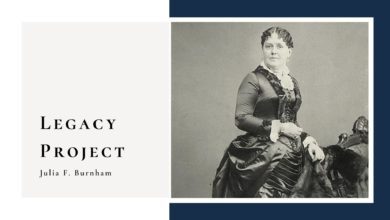Hometown Hero: Janet Watkins shaped the MSHS Madrigals
By FRED KRONER
fred@mahometnews.com
Tracing the origins of events steeped in history can be a bit nebulous. 
The starting point isn’t always clearly defined like a birthday, which can be verified by an official piece of paper.
The beginnings of Janet Watkins’ interest in Madrigals and its arrival in Mahomet doesn’t have a concrete date.
This is the 35th year in succession that Mahomet-Seymour High School students have been part of the elaborate production held in the high school commons.
Watkins, the former M-S choir director, organized and orchestrated the 1983 Madrigals dinner and performance as well as the next 20. That much is fact.
And yet, that one-night 1983 dinner was not the start of her Madrigals career.
The first one she was in charge of was at LeRoy High School in 1966, the first of three years she taught in that east-side McLean County district.
Even that was not the first involvement with Madrigals for the DeLand-Weldon High School graduate.
“When I went to college (at Illinois State University), I had never heard of Madrigals,” Watkins said. “I had no clue what it was.”
At the urging of a professor (Dr. John Ferrell), she auditioned for a part in a college production and was accepted.
“And that began my long history of interest in the art,” Watkins said. “I was taken to another time and place musically and shown so much of what was possible.”
She was so enamored by the Madrigals that when she returned to teaching at M-S after more than a decade off to raise a family, it was prominent on her to-do list.
“I came in with a heart for students wanting to have that experience,” Watkins said.
Her first two years at M-S, Watkins was the choral director at the elementary school level.
In the fall of 1983, she transitioned to the high school while continuing to teach at the junior high.
“The Madrigal experience for a teacher is the very best thing,” Watkins said. “You are teaching students to do everything on their own.
“As a choir director, they depend on you for entrances and cutoffs. Madrigals instills in them all of the nuances and musicality.
“To sit back at the dinner and see they have taken that and do it on their own is a satisfying feeling.”
The rewards were not unlike what she had experienced in her time away from the public educational system.
“It’s like raising kids,” she said. “You want them to grow up to be strong and independent.”
A learning curve existed for everyone, teacher included.
Receiving the go-ahead to pursue her Madrigals dream at M-S was not a problem.
Pulling it off without a budget, however, added to the challenges of starting what remains an annual tradition.
“That first year, we borrowed costumes and held it in the basement at Our Lady of the Lake Church,” Watkins said.
When she saw how popular the effort was, Watkins knew an expanded facility was a must.
In December of 1984, the Madrigals became a multi-day event and moved to the commons area at the high school — then a relatively new building — where it has remained.
This year’s Madrigals production is scheduled for this weekend.
Even in 1983, when student interest was minimal, Watkins conducted auditions rather than selecting the Madrigal members herself.
“I had auditions,” she said. “It’s important to me to have students who want to be there.”
Especially as she got her start in the district, Watkins said, “I didn’t know the capabilities of the kids at the high school.
“I knew what I had at the eighth-grade (the year before) and that class had a lot of possibilities. I knew I had the basics.”
Watkins doesn’t recall how many tried out for Madrigals in 1983, but the number couldn’t have been huge.
“We only had about 30 in choir,” she said.
She settled on 13 students, including the jester.
“The next year, we had 16, including the jester,” Watkins said.
By the time she retired, student interest in the Madrigals had mushroomed.
“Eighty to a hundred kids would audition,” Watkins said. “Sometimes we had to do a pre-audition.”
Though she incorporated much of what she saw in ISU’s productions, Watkins made one significant change at the outset.
“At ISU, when we sang, the jester was provided by the drama department and wasn’t part of the singing,” Watkins said.
She had a strong freshman voice that she wanted to make sure was included, and the jester role immediately became part of the M-S Madrigal singers.
“Andrew Olsen was a good singer and tenor,” she said. “He was the jester for four years.”
It would be several years until the jester’s counterpart, the wench, was added.
In her second year as director, Watkins decided the M-S students deserved their own costumes, not borrowed ones.
“Betty Triezenberg (a physical education teacher at Sangamon School) and I went to a fabric store in the mall and choose 16 outfits,” Watkins said. “We asked the Music Boosters for $500.
“She and I made a lot of the costumes. One girl made her own. Some parents helped. We made all of the decorations.”
Slowly but surely, an inventory of needed items was available.
“The trappings came little by little,” Watkins said. “At times, it seemed like we were always on the hunt, looking for a good deal.
“We did a lot of cutting, gluing and sewing. After so many years, we had a system in place. We might tweak something, but it was a well-oiled machine.”
Watching from the audience has always been special for Watkins, who calls the Madrigals performance “magic.”
“The students sing Acapella and direct themselves,” she said. “You have to become fine musicians to do it well. There is a real teamwork and bonding that happens.
“It’s like a fantasy weekend where you dress up and act like you are living in those times.”
For her, highlights include the feedback she receives years after students have graduated.
Brian Haag is one who communicated with his former teacher. He has worked at different jobs, both nationally and internationally.
“He said there has never been anything like sitting behind the Madrigal table,” Watkins said.
Watkins’ former mentor at ISU, Ferrell, is now deceased, but a part of him remains with the M-S Madrigals.
“He wrote the arrangement for “The 12 Days of Christmas,” that we still do at Madrigals,” Watkins said.
She acknowledged borrowing many of the concepts implemented by Ferrell at ISU.
“I wanted to replicate for my students what I experienced at ISU,” Watkins said. “My first idea of Madrigals was that we were in a Renaissance Banquet Hall and I wanted the audience to wish they could be up there doing that, too.”
Adjustments were part of the process of building the event.
“Later it became less singing to one another and more singing out to the audience,” Watkins said.
While leading the Madrigals, Watkins kept a bigger picture in mind.
“I looked at it that I was a little cog in the wheel preparing them for life,” she said. “What can I do to build character and bring out skills they didn’t know they had?
“I had a fascination in watching things become.”
Watkins is still actively involved with one facet of the Madrigals, even though she retired as a teacher in 2004.
She is a part of the committee that makes selections at the spring auditions.
“Some of the students (trying out) are children of people I had (in class),” Watkins said.
The conclusion of her teaching career coincided with another major event in her life.
“Five of our six kids were pregnant when I retired,” Watkins said. “Those (grandchildren) are now freshmen. Two others are juniors and another four are in junior high.
“They’re all in band, choir or singing, and we try to get to as much (of their performances) as we can. It doesn’t always enable us to make everything here.”
The Watkins will be with the M-S Madrigals this weekend in spirit as out-of-town events will keep them away.
When she does attend the M-S production, what she sees and hears is very familiar.
“My home church in Weldon was getting new drapes (decades ago) and getting rid of their old red drapes,” Watkins said.
She picked them up at a bargain price and they were quickly incorporated as “the covering over the table,” she said, “and they’re still working.”
Watkins’ husband — former M-S band director Dick Watkins — played an integral role.
“Dick fueled my hopes,” Janet Watkins said. “I would express a wish or a desire and he would encourage me and then make it happen.
“One year I said ‘I wish we had lights,’ and the next year,we had a bank of lights.”
Special thanks must also be directed to Watkins’ mother, whom Janet said “couldn’t sing.”
That didn’t stop her from fostering an interest in music in her children.
“She started us with piano lessons at a young age,” Janet Watkins said. ”I was 5.
“We practiced every day after school and twice as much on Saturday so we didn’t practice on Sunday.”
The toughest aspect of serving as M-S Madrigals director for nearly a quarter of a century occurred after the event had run its course.
“The hardest part,” Janet Watkins said, “was coming to school the following Monday because all of the magic was gone.”
And yet, it doubtless remains in the memories of both those who participated and those who watched.



